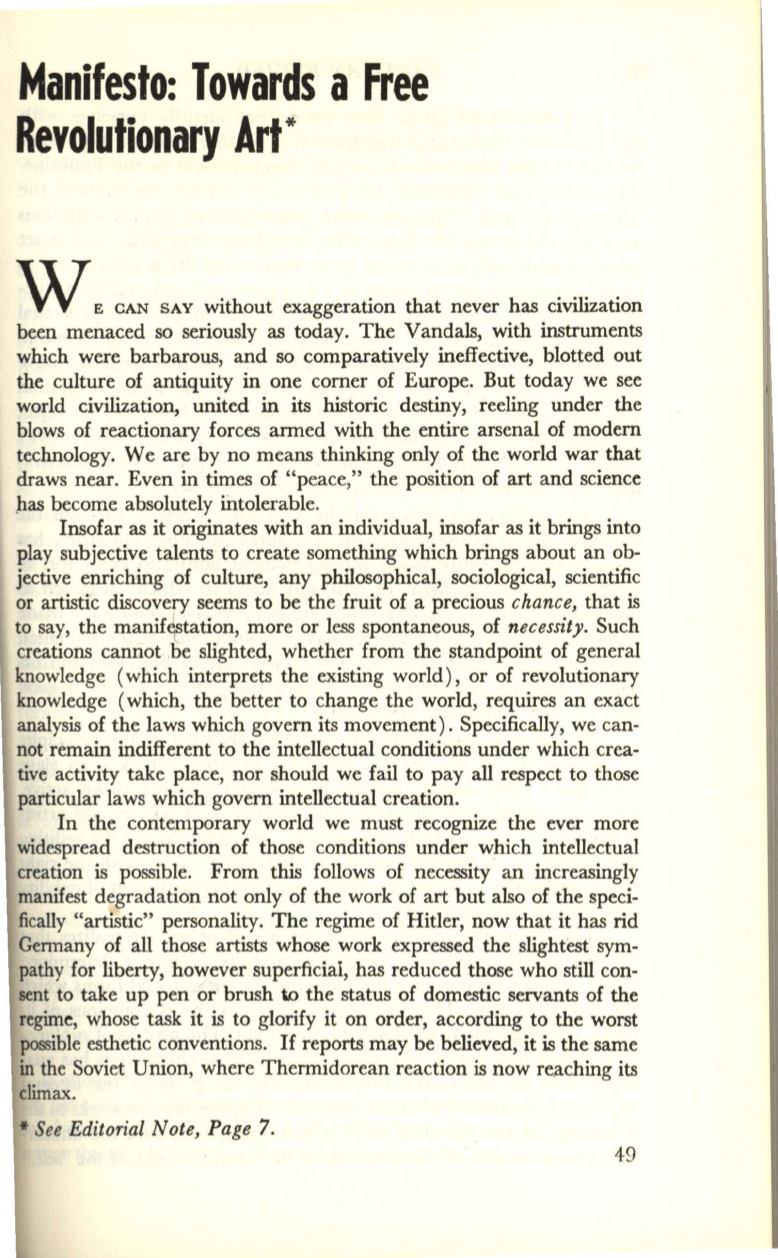
Manifesto: Towards aFree
Revolutionary Art*
WE
CAN SAY
without exaggeration that never has civilization
been menaced so seriously as today. The Vandals, with instruments
which were barbarous, and so comparatively ineffective, blotted out
the culture of antiquity in one comer of Europe. But today we see
world civilization, united in
its
historic destiny, reeling under the
blows of reactionary forces armed with the entire arsenal of modem
technology. We are by no means thinking only of the world war that
draws near. Even in times of "peace," the position of
art
and science
pas become absolutely intolerable.
Insofar as it originates with an individual, insofar as it brings into
play subjective talents to create something which brings about an ob–
jective enriching of culture, any philosophical, sociological, scientific
or artistic discovery seems to be the fruit of a precious
chance,
that is
to say, the manif<rtation, more or less spontaneous, of
necessity.
Such
creations cannot be slighted, whether from the standpoint of general
knowledge (which interprets the existing world), or of revolutionary
knowledge (which, the better to change the world, requires an exact
analysis of the laws which govern its movement) . Specifically, we can–
not remain indifferent to the intellectual conditions under which crea–
tive activity take place, nor should we fail to pay all respect to those
particular laws which govern intellectual creation.
In the contemporary world we must recognize the ever more
widespread destruction of those conditions under which intellectual
creation is possible. From this follows of necessity an increasingly
manifest degradation not only of the work of art but also of the speci–
fically "artistic" personality. The regime of Hitler, now that it has rid
Germany of all those artists whose work expressed the slightest sym–
pathy for liberty, however superficial, has reduced those who still con–
sent to take up pen or brush
w
the status of domestic servants of the
regime, whose task it is to glorify it on order, according to the worst
possible esthetic conventions.
If
reports may be believed, it is the same
in
the Soviet Union, where Thermidorean reaction is now re.aching its
climax.
*See Editorial Note, Page 7.
49


